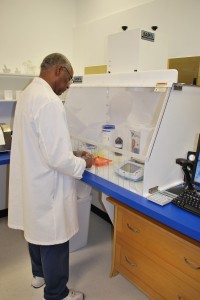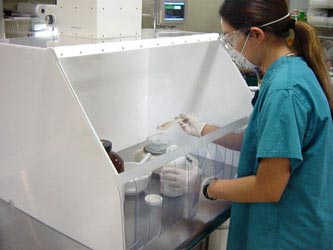
Hormone therapy is commonly used to treat menopause symptoms in women. Though research into hormone therapy and its long term health effects have posed differing results over time, it is still a popular option to many who are looking to ease the symptoms of menopause.
One treatment for hormone therapy is the use of pharmaceutical compounding.
The Federal Drug Administration (FDA) regards traditional pharmacy compounding as “the combining or altering of ingredients by a pharmacist, in response to a licensed practitioner’s prescription, to produce a drug tailored to an individual patient’s special medical needs.”
There are three major categories of FDA-approved menopausal hormone therapy products:
- Products containing only estrogen;
- products containing only progestin;
- and products containing estrogen and progestin
You can view the complete list of the FDA-approved medications for menopause here.
Common ingredients found in hormone therapy.
Many brand name, over-the-counter, and specialty compounded hormone medicines contain these similar ingredients:
- Estradiol
- Estrone
- Estriol
- 17-α-methyltestosterone
- Progesterone
- Testosterone
While these hormones are naturally occurring in the human body, at elevated levels they can be toxic and have carcinogenic effects.
The not-so hidden side effects for pharmacists.
Pharmacists, nurses, technicians, and others who prepare, handle and administer these medications may be exposed to significant health risks during the course of their work.
A 2003 study published in the Oxford Journals on Occupational Medicine states “workers involved in the manufacture of drug substances can be exposed to active pharmaceutical ingredients (APIs) designed with the express intention of an interaction with the human system and modification of its functioning. Whilst such modification is generally desirable in patients, any modification in function, whether positive or negative, is an unacceptable outcome in the pharmaceutical industry worker.”
Hazardous exposure to workers may occur through inhalation of dust created during the powder grinding, mixing and encapsulation processes.
OSHA found three common examples that may present significant risks to the compounder, one of which is hormone medications. OSHA says “compounded hormone prescriptions may include hazardous ingredients, such as the hormones progesterone, testosterone, methyl testosterone, estradiol, and estriol.”
Long term exposure to these hormones may cause an imbalance in levels resulting in adverse health effects.
|
Ingredient |
Side Effects |
Estradiol |
Causes human and animal mutations and has developmental reproductive effects. |
Estrone |
Reproductive effects include inhibition of egg implantation, suppression of spermatogenesis and impotence. |
Estriol |
A suspected carcinogen. |
17-α-Methyltestosterone |
A questionable human carcinogen, producing nonmalignant tumors in the liver. |
Progesterone |
Causes developmental abnormalities and has serious effects on males including impotence, breast enlargement and spermatogenesis. |
Testosterone |
Causes developmental changes in the urogenital system. |
How to reduce airborne hormone particles during compounding.
OSHA recommends that specific measures be implemented to: reduce direct skin contact; reduce exposure via inhalation; and minimize the possibility of chemicals being brought home on workers’ clothing.
Some examples include engineering controls (e.g., barriers and containments, laboratory hoods, glove boxes, and worker isolation); administrative controls; personal protective equipment (e.g., respirators, gloves and lab coats); and training.
 Ductless Powder Containment Hoods with HEPA Filtration
Ductless Powder Containment Hoods with HEPA Filtration
A ductless powder containment hood equipped with HEPA filtration is a portable, compact, and efficient solution to filtering renegade dust and powders during compounding.
Sentry Air’s Pharmaceutical Powder Containment Hoods* utilize a powerful fan and filtration system that pulls harmful airborne powder and particulate away from the operator’s breathing zone and directly into the HEPA filter, which is up to 99.97% efficient on particles 0.3 microns and larger.
By adding clear anti-static vinyl strip curtains, you better enclose the face opening of the hood while still allowing easy access inside.
Our containment hoods come in a variety of sizes and can be customized to your unique application. Most of our powder containment hoods are sized to work well with Torpac® capsule fillers.
*Our line of pharmaceutical powder containment hoods are not intended for sterile compounding applications.
Contact Us!
If you compound hormone therapy treatments in your pharmacy or would like more information about the health benefits of powder containment hoods, contact Sentry Air today. Give us a call at 800.799.4609, email sales@sentryair.com, visit our website www.sentryair.com or fill out the feedback form below.
Resources
- http://www.fda.gov/Drugs/GuidanceComplianceRegulatoryInformation/PharmacyCompounding/ucm183088.htm
- https://www.osha.gov/dts/sltc/methods/partial/pv2001/2001.html
- FDA’s pharmacy compounding Web page.
- https://www.osha.gov/dts/tib/tib_data/tib20011221.html
- http://occmed.oxfordjournals.org/content/53/6/357.full.pdf

 Made in the USA
Made in the USA
